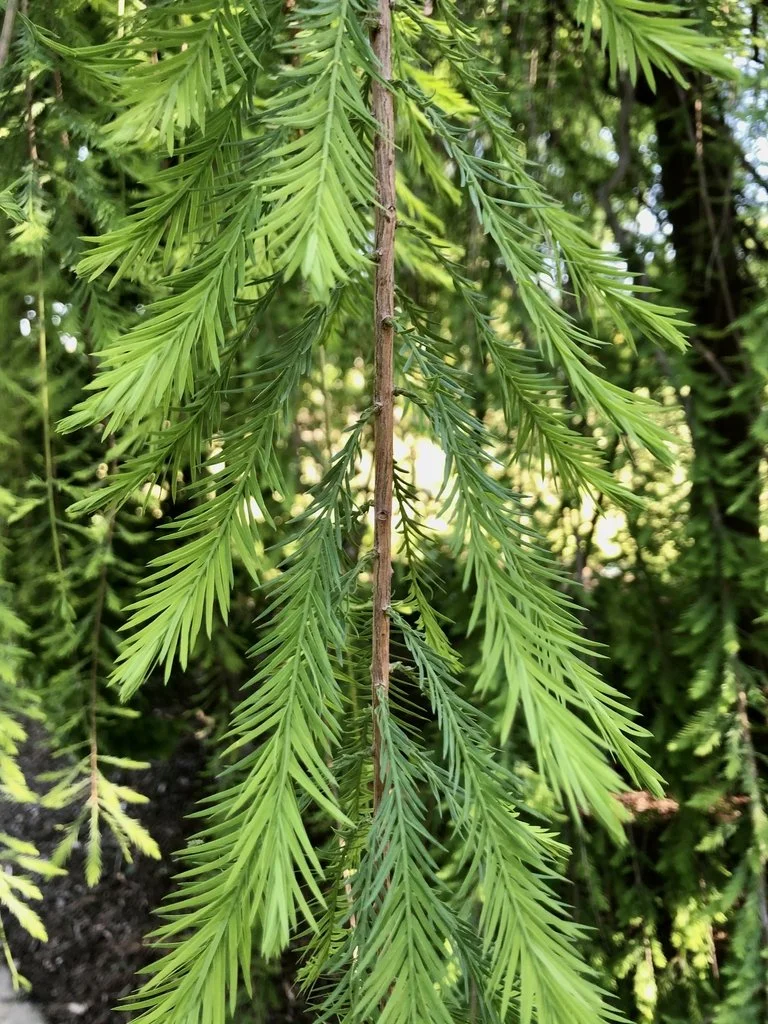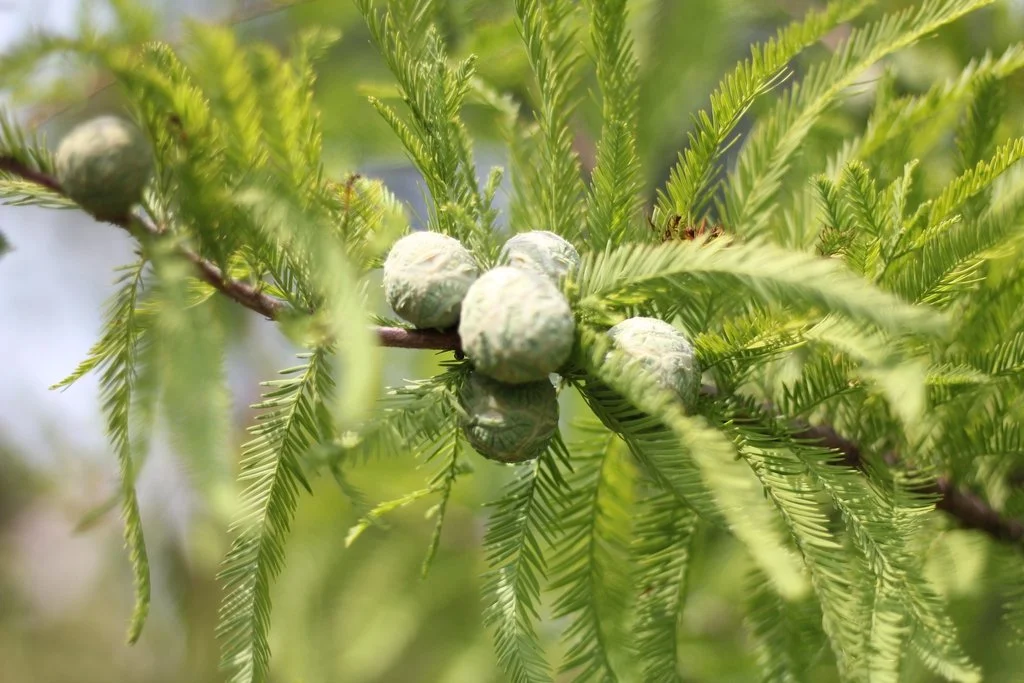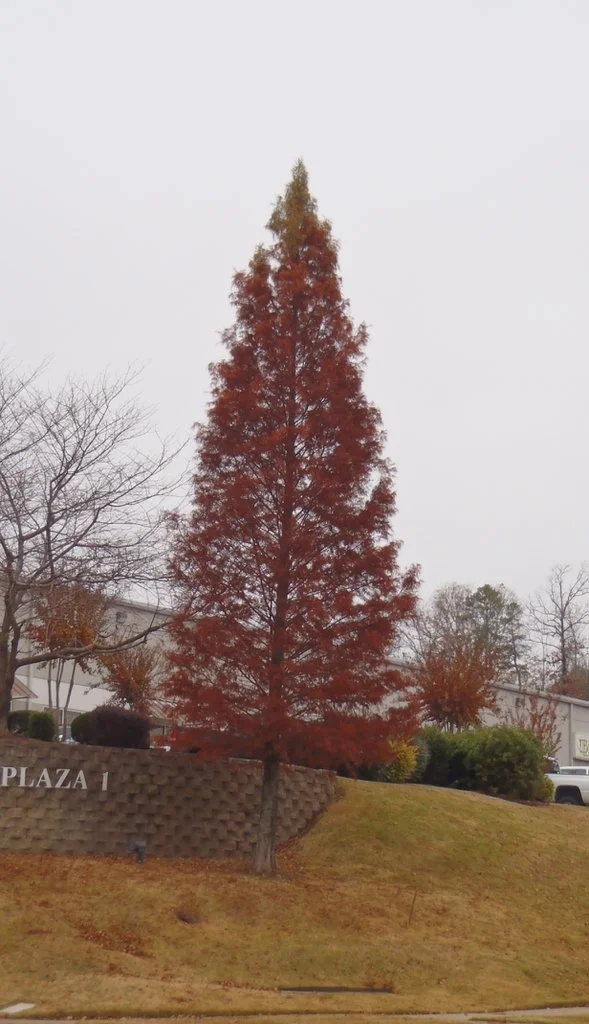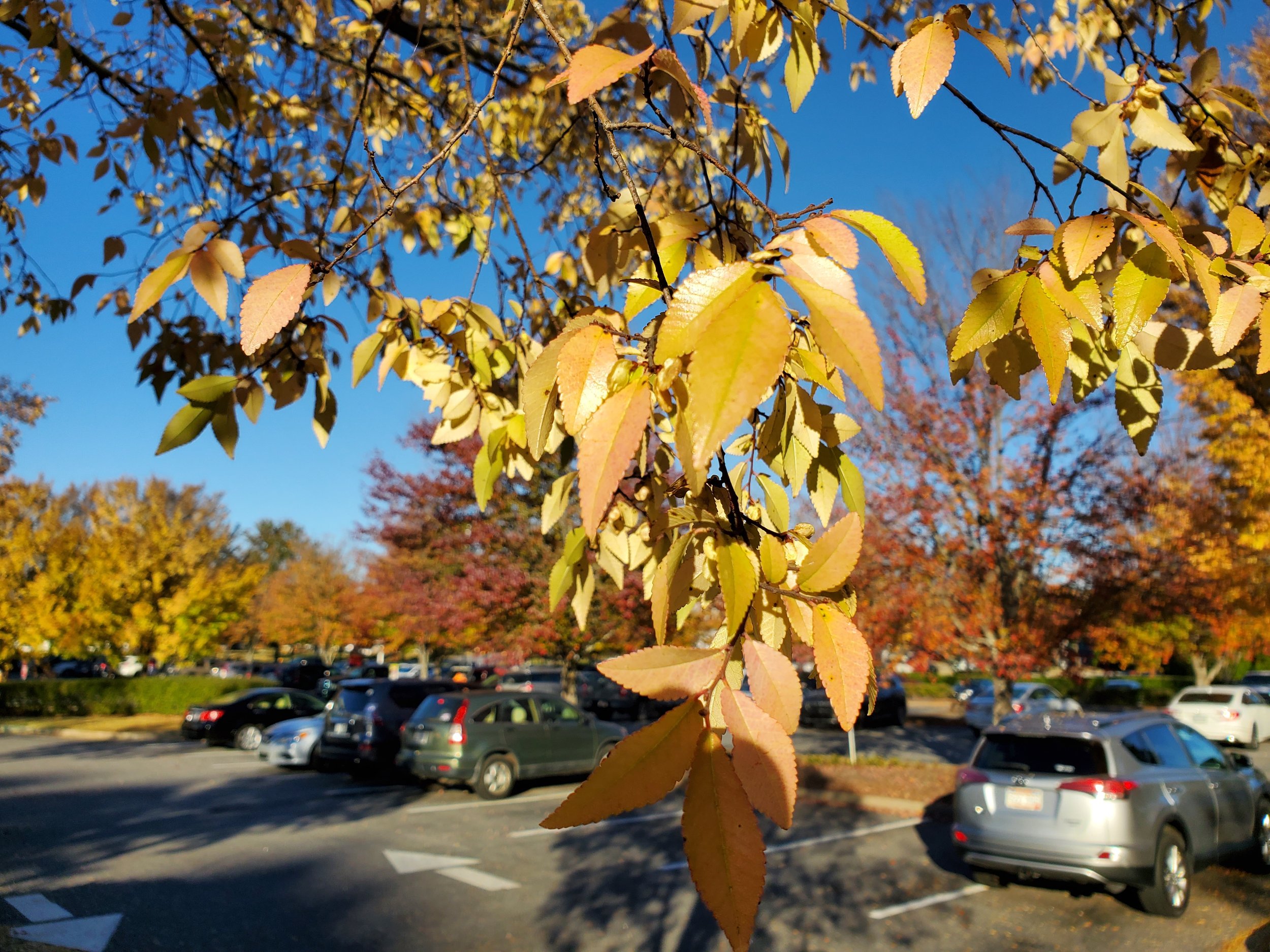Bald Cypress, Taxodium distichum (pronounced taks-O-di-um DIS-ti-kum) is an unusual native. It is one of a very small group of trees that are deciduous conifers. The bark of young trees exfoliates in long strips, revealing a warm cinnamon color underneath. It has two types of seed cones. Female cones are large marble-sized green balls held at the ends of it branches, while the male cones are pendulous, darker, and held closer to the tree’s upper interior. Although the tree has tough wood and tolerates heat and humidity, the feathery foliage looks soft and delicate. Needles spiral around the stems. Most trees have an attractive coppery-brown fall color before the feathers shed.
Bald Cypress grows well in coastal areas where it is known for pushing up “knees” when grown in swampy or water-logged soils. Many coastal trees are festooned with Spanish moss. The tree’s tolerance for low-oxygen soils makes it a great choice for heavy clay (read: low oxygen centent) soils in non-coastal areas.
Bald Cypress is hardy in zones 4-9. It needs full sun and acid soil, as trees exhibit an unhealthy yellowing (chlorosis) in alkaline soils. Trees are resistant to damage by deer. Mature trees can reach heights up to 70 feet and widths to 30 feet. The dwarf cultivar ‘Peve Minaret’ reaches 20 feet, despite early labels that called for a maximum height of 8 feet. Several weeping forms are available. Green Whisper® (‘JFS-SGPN’) was discovered in South Carolina and has a warmer, almost orange fall color. Shawnee Brave™ (‘Mickelson’) is widely available, and has a narrow pyramidal form.
Low maintenance and heat tolerance make Bald Cypress a good choice for street trees. Growth rate is moderate to rapid, making the narrow forms an option for planting in new subdivisions, where other trees might struggle in compacted soil of low fertility.
Feathery foliage of Bald Cypress. Photo by Cathy Dewitt CC BY 4.0
Female Bald Cypress seed cones. Photo by Synezis CC BY-SA 4.0
Fall color and form of ‘Shawnee Brave.’ Photo by Jim Robbins CC BY-NC-ND 4.0






